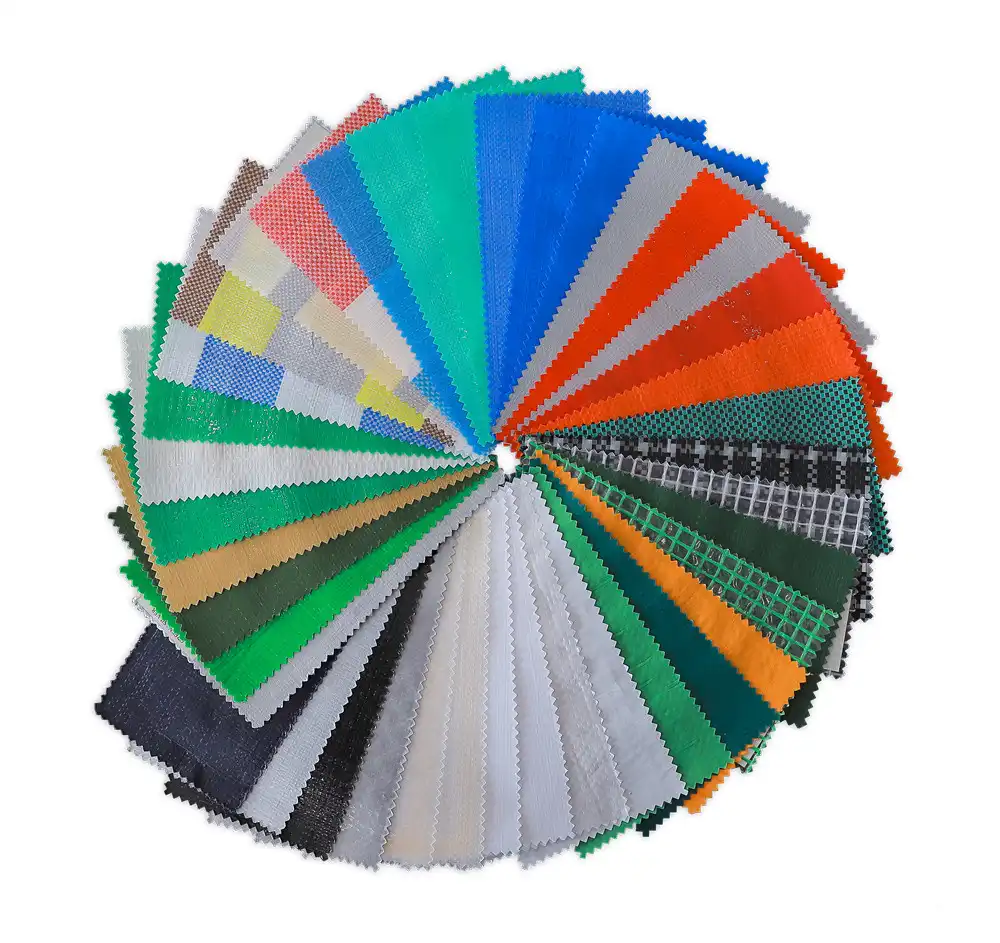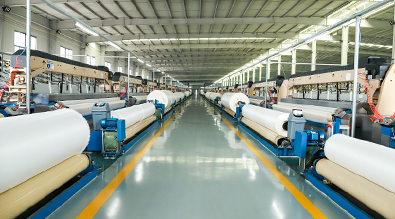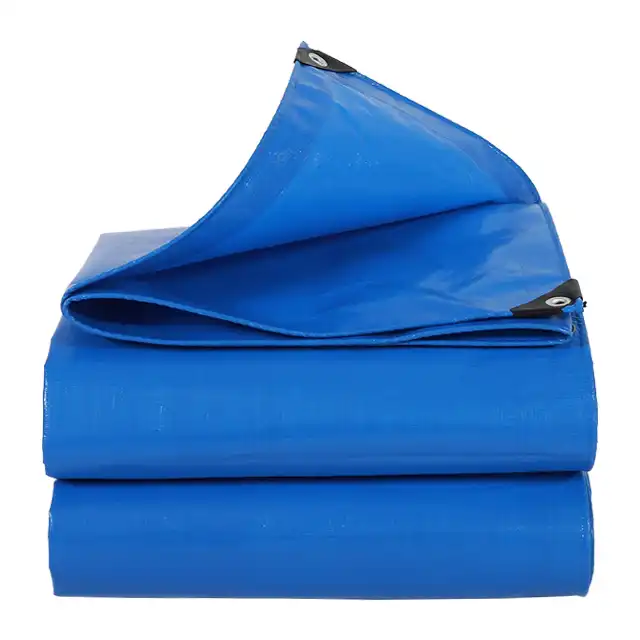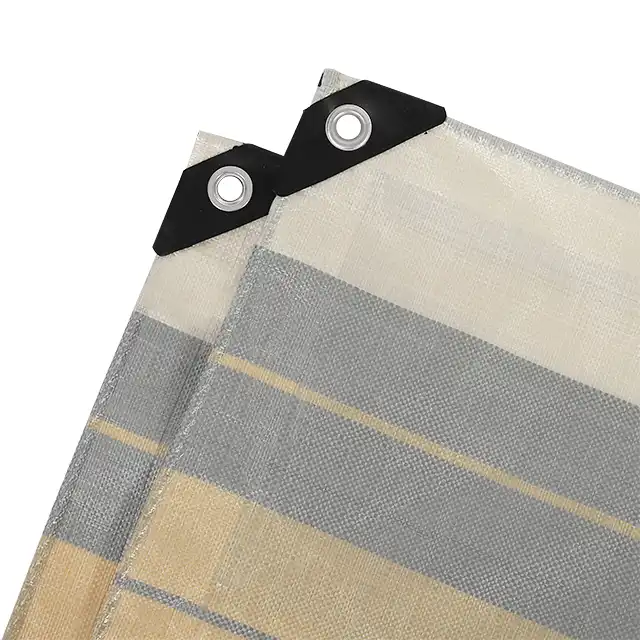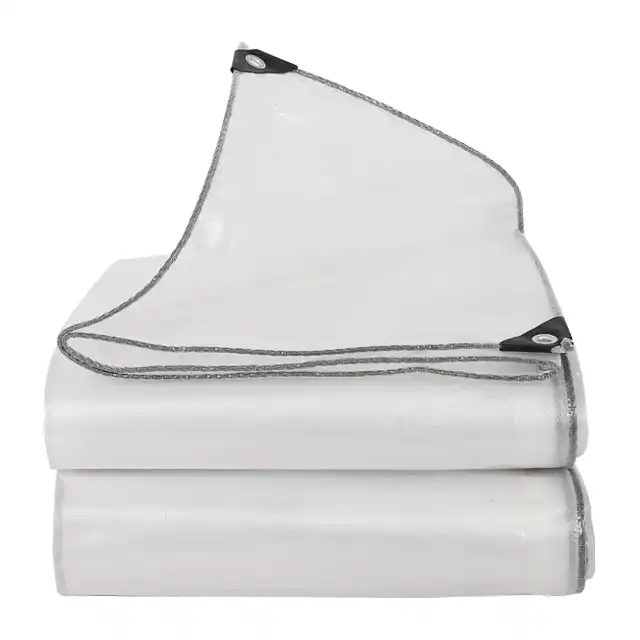How to Choose the Right Size Tarpaulin for Your Project?
Picture this: you've just finished setting up your outdoor construction site, confident that your equipment is properly protected, only to discover that your tarpaulin is too small to provide adequate coverage. Rain seeps through the gaps, expensive machinery gets damaged, and your project timeline suffers. This common scenario highlights the critical importance of selecting the right tarpaulin size from the start. Whether you're covering construction materials, protecting vehicles, or creating temporary shelter, choosing the correct tarpaulin dimensions can mean the difference between project success and costly mistakes.
Understanding Tarpaulin Size Fundamentals
-
Basic Measurement Principles
 When selecting the appropriate tarpaulin size for any project, the fundamental principle involves accurate measurement of the area or object requiring protection. One of the key factors to consider when selecting the right tarpaulin size for your task is the exact measurement of the operational area or object to be covered by the tarp. This process requires measuring length, width, and height to ensure complete coverage while accounting for necessary overhang and securing points. Professional contractors and facility managers understand that proper tarpaulin sizing extends beyond simple surface area calculations. The material's flexibility, weather conditions, and intended duration of use all influence sizing decisions. For instance, temporary covers for construction materials may require different sizing considerations compared to long-term agricultural applications or permanent outdoor storage solutions.
When selecting the appropriate tarpaulin size for any project, the fundamental principle involves accurate measurement of the area or object requiring protection. One of the key factors to consider when selecting the right tarpaulin size for your task is the exact measurement of the operational area or object to be covered by the tarp. This process requires measuring length, width, and height to ensure complete coverage while accounting for necessary overhang and securing points. Professional contractors and facility managers understand that proper tarpaulin sizing extends beyond simple surface area calculations. The material's flexibility, weather conditions, and intended duration of use all influence sizing decisions. For instance, temporary covers for construction materials may require different sizing considerations compared to long-term agricultural applications or permanent outdoor storage solutions.
-
Standard Tarpaulin Dimensions Available
The market offers various standard tarpaulin sizes to accommodate diverse project requirements, with options ranging from small residential applications to large-scale commercial and industrial uses. Professional-grade PE tarpaulins typically come in widths from 1.5 meters to 5 meters without joints, providing seamless coverage for different project scales. The availability of custom sizing ensures that specific project requirements can be met without compromising protection quality. Understanding weight classifications also plays a crucial role in size selection. A heavy-duty poly tarp normally has a measurement of 150 to 200 GSM or grams per square meter, which affects both durability and handling characteristics. Higher GSM ratings generally indicate thicker, more robust materials suitable for demanding applications, though they may require additional consideration for installation and maintenance.
Project-Specific Tarpaulin Sizing Strategies
-
Construction and Building Applications
Construction projects demand precise tarpaulin sizing to protect valuable equipment, materials, and work areas from environmental elements. The dynamic nature of construction sites requires tarpaulins that can adapt to changing project phases while maintaining consistent protection levels. Professional construction teams typically calculate tarpaulin size requirements by adding 15-20% extra coverage to account for wind uplift, securing mechanisms, and potential repositioning needs. Heavy-duty PE tarpaulins designed for construction applications feature reinforced edges, multiple grommets, and UV-resistant coatings that maintain integrity under prolonged exposure. If your tarp will endure heavy rain, snow, or intense sun, opt for a thicker, more durable option. This is especially important for outdoor projects that require long-term protection. Construction-grade tarpaulins often incorporate materials like HDPE woven fabric with LDPE coating, providing waterproof barriers while maintaining flexibility for various installation configurations.
-
Agricultural and Aquaculture Coverage Solutions
Agricultural applications require specialized tarpaulin sizing approaches that consider crop protection, equipment storage, and seasonal weather patterns. Farm operations benefit from tarpaulin systems that provide scalable coverage options, allowing for expansion or modification based on harvest cycles and equipment changes. The sizing strategy for agricultural tarpaulins often involves modular approaches, where multiple tarps can be connected to cover large areas efficiently. Aquaculture operations present unique sizing challenges due to water management requirements and irregular pond or tank configurations. Impermeable tarps for aquaculture applications must provide complete coverage while accounting for water displacement and structural support systems. Professional aquaculture tarpaulin sizing considers factors such as water depth, surface tension effects, and maintenance access requirements that influence overall dimension calculations.
-
Transportation and Logistics Requirements
Transportation industry tarpaulin sizing follows specific regulatory requirements and operational constraints that differ significantly from stationary applications. Truck covers and cargo protection systems must comply with weight limitations, aerodynamic considerations, and standardized loading dimensions. The sizing process for transportation tarpaulins involves precise measurements that account for cargo variability, securing point locations, and regulatory compliance requirements. Fleet managers understand that proper tarpaulin sizing directly impacts fuel efficiency, cargo security, and operational compliance. Oversized tarpaulins create unnecessary wind resistance and may exceed weight limits, while undersized covers compromise cargo protection and regulatory compliance. Professional transportation tarpaulin sizing typically involves collaboration between vehicle specifications, cargo requirements, and operational efficiency goals.
Material Quality and Sizing Considerations
-
Heavy-Duty PE Tarpaulin Specifications
Professional-grade tarpaulins manufactured from high-density polyethylene materials offer superior performance characteristics that influence sizing decisions. These materials provide exceptional tear resistance, UV protection, and waterproof capabilities that maintain effectiveness across various size configurations. The manufacturing process involves tightly woven polyethylene fibers laminated on both sides, creating durable materials suitable for demanding applications. Quality PE tarpaulins feature mesh counts ranging from 10x10 to 14x14, with thickness measurements between 7-12 mil, providing different strength characteristics across size ranges. UV treatment levels from 1-7% ensure material integrity under prolonged sun exposure, while waterproof coatings maintain protection effectiveness regardless of tarpaulin size. These specifications enable confident sizing decisions based on performance requirements rather than material limitations.
-
Custom Sizing and Manufacturing Capabilities
Modern tarpaulin manufacturing capabilities support custom sizing solutions that address specific project requirements without compromising material quality or performance characteristics. Advanced manufacturing processes enable seamless production of tarpaulins up to 5.1 meters in width, with custom length options that eliminate the need for field modifications or multiple tarp installations. Custom sizing options include specialized edge reinforcement, grommet placement, and attachment point configurations that optimize installation and maintenance procedures. Professional manufacturers utilize high-tech extruding machines and precision coating equipment to maintain consistent quality across custom size ranges. This manufacturing flexibility enables project managers to specify exact dimensions that match their unique requirements while maintaining professional-grade material standards.
Measurement Techniques and Best Practices
-
Professional Measuring Methods
Accurate tarpaulin sizing begins with professional measurement techniques that account for three-dimensional coverage requirements and environmental factors. For covering objects, it's important to measure the object and allow for enough extra material to fully cover the sides and secure the tarp. Professional measurement approaches involve systematic documentation of length, width, height, and securing point requirements to ensure comprehensive coverage. Experienced project managers utilize measurement protocols that consider wind load factors, thermal expansion effects, and maintenance access requirements. These factors influence final sizing decisions and help prevent common installation problems such as inadequate coverage, excessive material waste, or installation difficulties. Professional measuring techniques often involve multiple measurement points and verification procedures to ensure accuracy before finalizing tarpaulin specifications.
-
Environmental Factor Calculations
Environmental conditions significantly impact tarpaulin sizing requirements, particularly for long-term or outdoor applications. Wind load calculations influence the amount of additional material needed for secure installation, while thermal expansion considerations affect seasonal size requirements. Professional sizing protocols incorporate local weather data, seasonal variation patterns, and extreme condition scenarios to ensure reliable performance. Snow load calculations, particularly important for northern climates, require additional sizing considerations to prevent structural failure or inadequate coverage during winter months. Rainfall intensity data influences drainage design and edge configuration requirements that affect overall tarpaulin dimensions. These environmental factors often require engineering consultation to ensure proper sizing for demanding applications.
Installation and Maintenance Size Considerations
-
Securing Point Requirements
Proper tarpaulin installation requires strategic placement of securing points that influence overall size requirements and material distribution. The spacing and location of grommets, tie-down points, and edge reinforcements affect how tarpaulin size translates into effective coverage. Professional installation practices typically require securing points every 18-24 inches along edges, with additional reinforcement at corners and high-stress areas. Large tarpaulin installations benefit from intermediate securing points that prevent wind damage and maintain proper tension across the covered area. These additional securing requirements may influence sizing decisions, particularly for applications covering irregular shapes or requiring elevated installation. Professional installers understand that adequate tarpaulin size must account for material needed at securing points while maintaining effective coverage of the protected area.
-
Maintenance Access and Adjustability
Long-term tarpaulin installations require sizing considerations that accommodate maintenance access and periodic adjustments. Seasonal changes, equipment modifications, and changing operational requirements may necessitate tarpaulin repositioning or replacement. Sizing decisions should incorporate flexibility for future modifications while maintaining effective protection throughout the service life. Professional tarpaulin sizing often includes provisions for partial removal or adjustment without compromising overall protection. This approach requires additional material allowances and specialized securing systems that enable maintenance activities while preserving system integrity. The sizing strategy should balance initial installation requirements with long-term operational flexibility.
Cost-Effective Sizing Solutions
-
Balancing Performance and Economy
If in doubt, opt for a slightly larger size to ensure full coverage and protection, as tarpaulins can always be folded or trimmed to fit smaller areas. This practical approach helps avoid the common mistake of undersizing while providing flexibility for changing project requirements. However, significantly oversized tarpaulins create unnecessary costs and installation complications that should be avoided through careful planning. Economic sizing strategies consider both initial material costs and long-term operational expenses. Higher-quality materials in appropriate sizes often provide better value than lower-grade alternatives that require frequent replacement. Professional sizing approaches evaluate total cost of ownership, including installation labor, maintenance requirements, and expected service life to determine the most cost-effective solution.
-
Volume Purchasing and Custom Orders
Large-scale projects benefit from volume purchasing strategies that reduce per-unit costs while ensuring consistent sizing across multiple applications. Professional procurement approaches often involve standardizing tarpaulin sizes across similar applications to achieve economies of scale. Custom manufacturing capabilities enable optimization of material usage while meeting specific project requirements. Strategic sizing decisions can reduce waste and improve project efficiency by standardizing dimensions where possible while maintaining application-specific requirements. Professional manufacturers offer guidance on size optimization that balances performance requirements with manufacturing efficiency, resulting in cost-effective solutions for large-scale projects.
Conclusion
Selecting the right tarpaulin size requires careful consideration of project requirements, environmental conditions, and long-term operational needs. Success depends on accurate measurement, understanding of material capabilities, and professional sizing strategies that balance performance with cost-effectiveness. Proper sizing ensures reliable protection while optimizing installation efficiency and maintenance requirements.
Cooperate with Linyi Shengde Plastic Co., Ltd.
As a leading China tarpaulin manufacturer established in 2003 with over 20 years of expertise, Linyi Shengde Plastic Co., Ltd. offers comprehensive tarpaulin solutions for projects of any scale. Our state-of-the-art manufacturing facility features advanced production capabilities including 30+ high-tech extruding machines, 400+ Korea-imported automatic water-jet looms, and specialized coating equipment that ensures consistent quality across all tarpaulin sizes.
Our reputation as a trusted China tarpaulin supplier stems from our commitment to high-quality products at competitive prices, backed by ISO 9001:2015 certification and partnerships with international organizations including UNHCR, IOM, ICRC, and UNICEF. With strong R&D capabilities and custom manufacturing options, we provide tarpaulin for sale solutions ranging from standard sizes to specialized custom dimensions up to 5 meters in width.
Whether you need China tarpaulin wholesale solutions for large-scale projects or specific High Quality tarpaulin products for specialized applications, our experienced team provides competitive tarpaulin price options with reliable delivery to over 30 countries worldwide. Contact us today at info@shengdetarp.com to discuss your project requirements and discover why leading companies choose Linyi Shengde as their preferred China tarpaulin factory partner.
FAQ
Q: How much extra material should I add when calculating tarpaulin size?
A: Generally add 15-20% extra coverage for securing points, wind factors, and installation flexibility.
Q: What's the maximum width available for seamless tarpaulin coverage?
A: Professional manufacturers can produce seamless tarpaulins up to 5.1 meters in width without joints.
Q: How does GSM rating affect tarpaulin size selection?
A: Higher GSM (150-200 for heavy-duty) indicates thicker material, affecting handling and installation of larger sizes.
Q: Can tarpaulins be custom-sized for irregular shapes?
A: Yes, professional manufacturers offer custom sizing and edge configurations for specialized applications.
References
1. "Tarpaulin Selection and Sizing Guidelines" - Industrial Fabric Association International - Professional standards for tarpaulin sizing and applications
2. "Construction Site Protection: Material Selection and Installation" - American Society of Civil Engineers - Engineering guidelines for protective covering systems
3. "Agricultural Tarpaulin Applications and Sizing Requirements" - Agricultural Engineering Society - Specialized sizing requirements for farm and agricultural applications
4. "Transportation Industry Tarpaulin Standards and Regulations" - Commercial Vehicle Safety Alliance - Regulatory requirements and sizing standards for transportation applications
